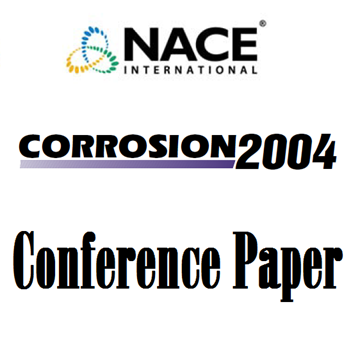Search
51317-9333-Characterization of Sacrificial Protection Efficacy and Longevity of a Thermal Spray Non-skid Coating under Sealants and Topcoats
Also Purchased
04022 Experiences on Thermal Spray Aluminum (TSA) Coating for Offshore Structures
Product Number:
51300-04022-SG
ISBN:
04022 2004 CP
Publication Date:
2004
$20.00
98512 RESULTS OF HELD APPLICATION AND LABORATORY TESTING OF THERMAL SPRAY UNS N10276 COATING FOR SOUR MNE VESSELS
Product Number:
51300-98512-SG
ISBN:
98512 1998 CP
$20.00
98507 Application of Thermal Spray Coatings for 304 SS SCC Mitigation in High Temperature Water
Product Number:
51300-98507-SG
ISBN:
98507 1998 CP
$20.00




